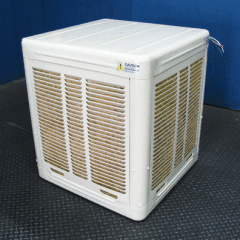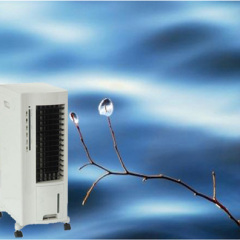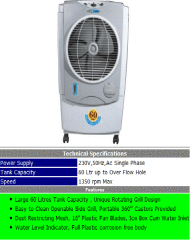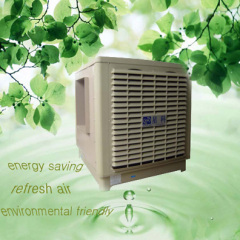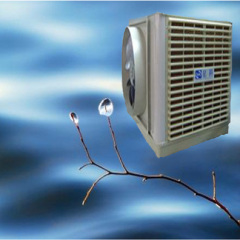
|
Guangzhou Xingke Mechanical Equipment Co.,ltd
|
swamp air cooler evaporative cooler
| Price: | 50.0~200.0 USD |
| Payment Terms: | T/T,L/C,D/P;cash against order |
| Special Groups: |
enviromental air cooler (24)
|
| Place of Origin: | Guangdong, China (Mainland) |
|
|
|
| Add to My Favorites | |
| HiSupplier Escrow |
Product Detail
Portable evaporative swamp air cooler
1.Energy saving.
2.Enviromental friendly
3.air-purifying as well as low cost
How Do Evaporative Coolers Work?
History
- Circulating air over or through water soaked materials is the basic concept behind evaporative coolers. Centuries ago, in the Middle East, buildings were designed with wind shafts. These were located on the roof, catching the wind, which would then pass through a reservoir of water. The wind, cooled by water, was then directed into the house to cool the interior.This concept continued to be used, taking on many forms. In the 1920s, screened porches were commonly used as sleeping porches, particularly in the southwest desert of the United States. Sheets soaked in water were hung inside the screens and fans would pull the night air in through the wet sheets, resulting in a cooler ambient temperature.
Mechanized
- The concept of air cooled by water became mechanized in the 20th century, and the evaporative cooler, as it was termed, became the subject of numerous patents. Elements used in these coolers included wood wool pads, a reservoir with a float pump to maintain levels, a pump and a powerful fan.The fan draws in the warm air from the outside. The air is pulled through the pads, which are typically made of cedar shavings or plant cellulose. The pads are wet; the water pump continually drenches them with water. The water from the pads evaporates into the trapped air, which in turn lowers the temperature of the air. It is then blown into the interior of the building through the ductwork.
Effectiveness
- Evaporative coolers work best if the interior of the building is not well sealed. Because the cooled air is being blown into the home, a window or door left slightly open creates a pressure front, resulting in a more forcible circulation of the cooled air. The "faster" the air moves, the cooler if feels against the skin.Evaporative coolers are more effective in regions with high temperatures but low levels of humidity, such as the Middle East and the southwestern United States. Evaporative coolers are essentially pushing wet air into the building, creating higher levels of humidity. But if the humidity is already high, and the air is already "wet," the evaporative process is slowed. The air blown into the building isn't as cool; it increases the already high levels of humidity.If the outside temperature is 100 degrees, for example, with a relative humidity of 10%, an evaporative cooler would lower the inside temperature to 73 degrees. If the humidity were 50%, the cooler would only lower the temperature to 88 degrees.
Green Alternative
- Air conditioners use refrigerants such as chlorofluorocarbons and hydro-chlorofluorocarbons to cool the air that is then blown into the interiors of buildings. These refrigerants are considered by some to be harmful to the ozone layer.Evaporative coolers use no refrigerants. The basic components are air, water, and pads made from wood or cellulose. The only chemicals used are those used in the manufacture of the pads; they are impregnated with a chemical compound to protect them against rot.The cost of operating an evaporative cooler can be up to two-thirds less than operating an air conditioner.The basic operative principle, though, prevents this device from being the dominant cooling system in the United States and Europe. It is dependent on low humidity levels for effectiveness
For more information about Evaporation air coolers,plz enter into our another website or contact me online by skype turnanewleaf.
Didn't find what you're looking for?
Post Buying Lead or contact
HiSupplier Customer Service Center
for help!
Related Search
Evaporative Swamp Cooler
Evaporative Air Cooler
Swamp Cooler
Evaporative Cooler
Mobile Evaporative Cooler
Evaporative Cooler Fan
More>>


